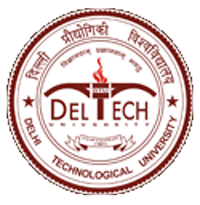Please use this identifier to cite or link to this item:
http://dspace.dtu.ac.in:8080/jspui/handle/repository/14987| Title: | CONTROL OF POWER FLOW WITH THE USE OF DISTRIBUTED POWER FLOW CONTROLLER (DPFC) |
| Authors: | SHAKYA, MANISH |
| Keywords: | POWER FLOW CONTROLLER HARMONIC COMPONENT DPFC |
| Issue Date: | Jul-2016 |
| Series/Report no.: | TD NO.1682; |
| Abstract: | In modern power systems, there is a great demand to control the power flow actively. Power flow controlling devices (PFCDs) are required for such purpose, because the power flow over the lines is depends on the nature of the impedance of the each line. Due to the control capabilities of different types (of PFCDs, the trend is that mechanical PFCDs are gradually being replaced by Power Electronics (PE) PFCDs. Among all Power Electronic PFCDs, the Unified Power Flow Controller (UPFC) is the most versatile device. However, the UPFC is not widely applied in utility grids, because the cost of such device is much higher than the rest of PFCDs and the reliability is relatively low due to its complexity. The objective of this project is to present a new PFCD that offers the same control capability as the UPFC, at a reduced cost and with an increased reliability. The new device, so-called Distributed Power Flow Controller (DPFC), is introduced and presented in this project. The DPFC is a further development of the UPFC. The DPFC provides comparable performance as the combined FACTS device - the UPFC, acceptable cost to electric utilities and reliability for power systems. The DPFC eliminates the common DC link within the UPFC, to enable the independent operation of the shunt and the series converter. The DFACTS concept is employed in the design of the series converter. Multiple low-rating singlephase converters replace the high-rating three-phase series converter, which greatly reduces the cost and increases the reliability. The active power that used to exchange through the common DC link in the UPFC, is now transferred through the transmission line at the 3rd harmonic frequency. This project starts with the review the state-of-art of current PFCDs, followed by the research at the DPFC device level, including the operation principle, the modeling and control, and experimental demonstrations and the feasibility of the DPFC for real networks. The DPFC has been modeled in a rotating dq-frame. Based on this model, the basic control of the DPFC is developed. The basic control stabilizes the level of the capacitor DC voltage of each converter and ensures that the converters inject the voltages into the network according to the command from the central control. The shunt converter injects a constant current at the 3rd harmonic frequency, while its DC voltage is stabilized by the fundamental frequency component. For the series converter, the reference of the output voltage at the fundamental frequency is obtained from the central controller and the DC voltage level is maintained by the 3rd harmonic component. |
| URI: | http://dspace.dtu.ac.in:8080/jspui/handle/repository/14987 |
| Appears in Collections: | M.E./M.Tech. Electrical Engineering |
Files in This Item:
| File | Description | Size | Format | |
|---|---|---|---|---|
| pdfjoiner(1).pdf | 3.77 MB | Adobe PDF | View/Open |
Items in DSpace are protected by copyright, with all rights reserved, unless otherwise indicated.



